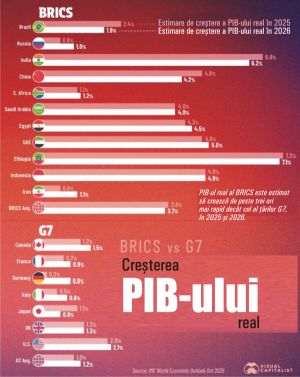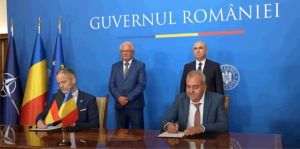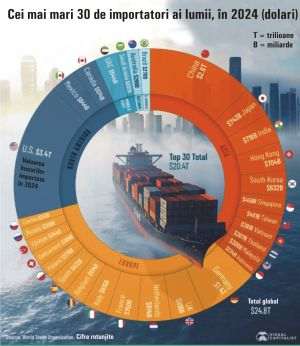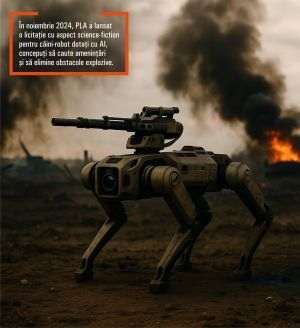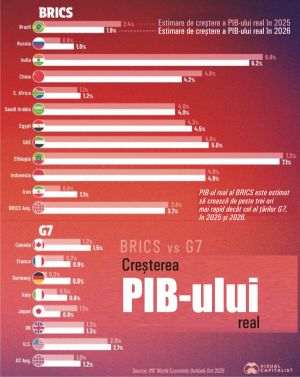• (Interview with Mihail Ion - the president of Raifeissen Asset Management and Vice-president of the Association of Fund Managers - Part I)
Reporter: Are you still focused on making purchases on the capital market? Did you expand your holdings on the BSE?
Mihail Ion: We have several products that cover the entire risk and yield range. That does not mean that we changed the profile of our stock-oriented funds. They still remain stock funds.
At the end of 2007 and in the second half of 2008, we came up with new products with a lower risk rate which means we practically completed our range of products, with a diversified fund and a stock fund. Therefore, the funds that were focused on stocks have remained so, they continue to invests in stock, but we also have other funds which are more conservative.
Reporter: Can you give me an example of conservative funds?
Mihail Ion: We had the Raiffeisen Prosper fund, that is a stock fund and Raiffeisen România Acţiuni, that only invests on the Romanian stock market, whereas the first also invests abroad. In 2007 we created Raiffeisen Confort, which is a protected capital fund, and at the end of last summer, we launched two new products, namely the Raifeissen Monetar fund, which is an open investment fund, and Raiffeisen Strategii Valutare (Currency Strategies), which is a closed monetary fund, which has a strategy for increasing its return using the currency market. These two new funds have completed the initial product range, which was aimed at high risk, high return investments.
Reporter: Which fund of the ones you listed above provided the highest returns?
Mihail Ion: There is a always a correlation between risk and returns. Right now, it"s the conservative funds that have positive returns, because funds that invested in stock have experienced losses following the corrections on the stock market. Raiffeisen Monetar, Raiffeisen Confort and Raiffeisen Strategii Valutare (Currency Strategies) have positive returns, even though they haven"t performed very well historically. For instance, Raiffeisen Confort had a 6% return last year, and the other funds have been in the market for only 6 months, and they are generating decent returns for their customers. But I can"t say that stock funds are not profitable. They have just suffered corrections, because of the evolution of the market. In the long run however, they will bring positive returns, obviously.
Reporter: Do you intend to launch any other products this year?
Mihail Ion: For this year we want to increase volume for the products that we already have. Our full range of products is the most complete on the market, and therefore I don"t think we need to come up with new products.
Reporter: What is the value of assets managed by Raiffeisen Asset Management?
Mihail Ion: Right now, we have over 130 million lei in assets (including our pension funds). In 2008 we experienced a small drop, because of the stock market"s correction, but in the last three months we have seen an increase in the size of the assets we are managing.
Reporter: What is your current market share?
Mihail Ion: Our market share, according to the number of funds that we have, because that"s what the Association of Fund Managers takes into account when determining the market share, is somewhere around 10%. If we were to take into account our other products (closed funds, individual portfolios and voluntary pensions funds), the market share would be greater.
Reporter: Given the current circumstances, are investors still interested in mutual funds?
Mihail Ion: Yes they are, and products with a low risk factor are very attractive right now. If we consider Raiffeisen Monetar, it manages to bring returns above the average bank interest rate, while it provides many advantages. Raiffeisen Asset Management has a very professional approach in presenting the product to our customers and polls show that results of the sales are extremely encouraging. We have passed the 1300 customer mark in the last two months, with the net subscribed assets exceeding the 30 million lei mark, since the beginning of the year, in the case of Raiffeisen Monetar. The products are attractive, but right now investors are sitting on the sidelines when it comes to stock market funds and prefer to invest in products with a low rate of risk.
Reporter: So it is Raiffeisen Monetar that has attracted the most investors lately.
Mihail Ion: Yes, because it has a low risk profile and provides significantly higher returns then bank deposits, with little risk, while at the same time allowing one to liquidate their investment at any time, and that is what investors are looking for at the moment.
Reporter: What shares are you focused on the Bucharest Stock Exchange?
Mihail Ion: We publish a monthly report for each fund, and that"s where one can see the most important holding for each of them. We also work with specific indicators, namely the stock market indexes, and therefore our allocation across certain stocks mirrors the stock market indexes as well.
If we see a share that is going to outperform the market, we will increase its weight in our portfolio, and vice-versa.
Reporter: What is your exposure to the international markets?
Mihail Ion: Exposures to international markets is focused mainly on the emerging markets, we were the first to go down this road and we are the first to offer exposure to the regional market, because we want to find a risk and return profile similar to that of Romania"s market. There are markets that have a have a higher growth potential, but they also pose higher risks. These include Central and Eastern Europe, South America and Asia. In South America, Brazil is one of the world"s largest raw materials producers. We adjust our allocations for those markets based on circumstances, for instance right now we have significantly reduced our exposure to Central and Eastern Europe, which is currently considered one of the most vulnerable emerging markets in the world, as the economies in the regions have serious imbalances. This is where Brazil fares much better, prices for raw materials have stabilized and expectations on that subject are positive, and Asia might be emboldened by certain regional stimuli, and that is why Eastern and Central Europe have a lower weight in our portfolio.
Reporter: But what is the domestic to international market exposure ratio?
Mihail Ion: It varies from one product to another. For instance, the Raiffeisen Prosper fund employs a long term strategy involving 20% monetary instruments, 80% stock. Out of those 80%, 50% is the exposure to the domestic market, 30% abroad, and Raiffeisen Benefix has 40% of its portfolio in long term stock holdings, and that 40% is divided as follows: 27.5% in domestic market holdings, 12.5 on the foreign market. Of course, investors in Central and Eastern Europe are prefer having exposure on the local markets, and to have that exposure denominated in the local currency, most of the time, but in order to avoid being 100% exposed to events which are specific for Romania, which may not always be positive and seeing as the Romanian stock market had one of the highest drops in the region, we have decided to put part of our holdings on the foreign markets. Obviously, diversifying our placements helps mitigate risks, and what"s more, the evolution of the exchange rate can sometimes be beneficial for the evolution of the portfolio, if it is denominated in lei, as it was recently, and that is why sometimes we opportunistically take on the exchange rate risk.
Reporter: What are your results for 2008?
Mihail Ion: This is something I can"t discuss right now, because they are not final yet. We will post the audited final results at the end of April.
Reporter: But compared to 2007, what were last year"s results like?
Mihail Ion: Compared to 2007, they are relatively similar, meaning we"re near the break-even point, where earnings are close to expenses.

